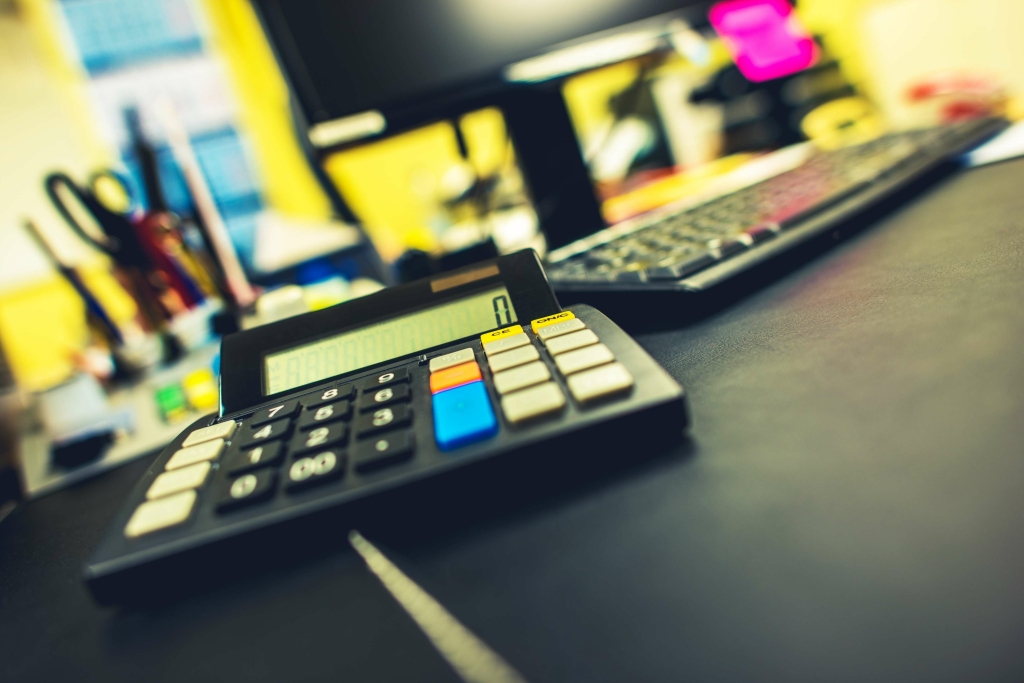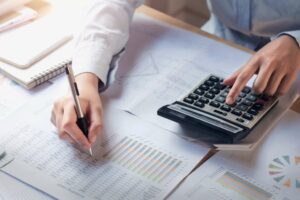Content

For example, any gain that is attributable to the depreciation taken during the asset’s life may be taxed at the higher ordinary tax rate in comparison to the standard capital rate. Depreciation for intangible assets is called amortization, and businesses record accumulated amortization the same accumulated depreciation as accumulated depreciation. The same is true for many big purchases, and that’s why businesses must depreciate most assets for financial reporting purposes. However, when you eventually sell or retire an asset, you debit the accumulated depreciation account to remove the entry for that asset.
- Accumulated depreciation is the total amount of depreciation of a company’s assets, while depreciation expense is the amount that has been depreciated for a single period.
- To see how the calculations work, let’s use the earlier example of the company that buys equipment for $50,000, sets the salvage value at $2,000 and useful life at 15 years.
- The concept of depreciation describes the allocation of the purchase of a fixed asset, or capital expenditure, over its useful life.
- Over the years the machine decreases in value by the amount of depreciation expense.
- For tax purposes, the IRS requires businesses to depreciate most assets using the Modified Accelerated Cost Recovery System .
Depreciation expense is a portion of the capitalized cost of an organization’s fixed assets that are charged to expense in a reporting period. It is recorded with a debit to the depreciation expense account and a credit to the accumulated depreciation contra asset account. One difference between the two concepts is that accumulated depreciation is stated on the balance sheet , while depreciation expense appears on the income statement, usually within the operating expenses section. Another difference is that the depreciation expense for an asset is halted when the asset is sold, while accumulated depreciation is reversed when the asset is sold. The accumulated depreciation account is a contra asset account on a company’s balance sheet.
What Are the Main Types of Depreciation?
Say that five years ago, you dedicated a room in your home to create a home office. You estimate the furniture’s useful life at 10 years, when it’ll be worth $1,000. The result is $10,000, which is the amount that will be depreciated from the asset every year until there’s no useful life remaining. Some companies may list depreciation for plant, machinery, and equipment separately under the value of each item instead of a cumulative figure used in the above example. Waggy Tails, a pet grooming company, purchases some equipment with a useful life of 10 years for $110,000. Once the useful life of the equipment is over, Waggy Tails can salvage $10,000. For every asset you have in use, there is the “original basis” and then there’s the “accumulated depreciation” .

Even then, the accumulated depreciation cannot exceed the asset’s original cost, despite remaining in use after its estimated useful life. The journal entries for the accumulated depreciation will help you determine how much of an asset has been written off and its remaining useful life. Typically, there’s an original basis for every asset you have in use, equal to the original purchase price. Then, there’s accumulated depreciation or the value lost in the asset, which is considered an expense on your books. In order to calculate the depreciation expense, which will reduce the PP&E’s carrying value each year, the useful life and salvage value assumptions are necessary. Alternatively, the accumulated expense can also be calculated by taking the sum of all historical depreciation expense incurred to date, assuming the depreciation schedule is readily available. The purpose of depreciation is used to match the timing of the purchase of a fixed asset (“cash outflow”) to the economic benefits received (“cash inflow”).
What is accumulated depreciation?
To see how the calculations work, let’s use the earlier example of the company that buys equipment for $50,000, sets the salvage value at $2,000 and useful life at 15 years. The estimate for units to be produced over the asset’s lifespan is 100,000. For example, if a company purchased a piece of printing equipment for $100,000 and the accumulated depreciation is $35,000, then the net book value of the printing equipment is $65,000. Tracking the depreciation expense of an asset is important for reporting purposes because https://www.bookstime.com/ it spreads the cost of the asset over the time it’s in use. Calculating accumulated depreciation is a simple matter of running the depreciation calculation for a fixed asset from its acquisition date to its disposition date. Although the straight-line method is the simplest and most common method of depreciation, accumulated depreciation will take place no matter which method is used to depreciate your assets. Accumulated depreciation for the desk after year five is $7,000 ($1,400 annual depreciation expense ✕ 5 years).
- Eventually, when the asset is retired or sold, the amount recorded in the accumulated depreciation and the asset’s original cost will be reversed.
- Harold Averkamp has worked as a university accounting instructor, accountant, and consultant for more than 25 years.
- It is important to note that an asset’s book value does not indicate the vehicle’s market value since depreciation is merely an allocation technique.
- ScaleFactor is on a mission to remove the barriers to financial clarity that every business owner faces.
- All have in-depth knowledge and experience in various aspects of payment scheme technology and the operating rules applicable to each.
- Overall, you add depreciation expense charged during the current period to the accumulated depreciation at the beginning of the period while subtracting the depreciated expense for a disposed asset.
Learn financial statement modeling, DCF, M&A, LBO, Comps and Excel shortcuts. In our PP&E roll-forward, the depreciation expense of $10 million is recognized across the entire forecast, which is five years in our illustrative model, i.e. half of the ten-year useful life. Since the salvage value is assumed to be zero, the depreciation expense is evenly split across the ten-year useful life (i.e. “spread” across the useful life assumption). Suppose that a company purchased $100 million in PP&E at the end of Year 0, which becomes the beginning balance for Year 1 in our PP&E roll-forward schedule.
Accumulated Depreciation Explained
For more than 15 years, she’s produced money-related content for numerous publications such as TheStreet and MarketWatch, and financial services firms like TD Ameritrade and PNC Bank. She covers topics such as stock investing, budgeting, loans, and insurance, among others. This is done for a few reasons, but the two most important reasons are that the company can claim higher depreciation deductions on their taxes, and it stretches the difference between revenue and liabilities. Depreciation expense is not an asset and accumulated depreciation is not an expense. The simplest way to calculate this expense is to use the straight-line method. In other words, depreciation spreads out the cost of an asset over the years, allocating how much of the asset that has been used up in a year, until the asset is obsolete or no longer in use. Without depreciation, a company would incur the entire cost of an asset in the year of the purchase, which could negatively impact profitability.

Starting from the gross property and equity value, the accumulated depreciation value is deducted to arrive at the net property and equipment value for the fiscal years ending 2020 and 2021. Using the straight-line method, you depreciation property at an equal amount over each year in the life of the asset. John Cromwell specializes in financial, legal and small business issues. Cromwell holds a bachelor’s and master’s degree in accounting, as well as a Juris Doctor. To cater to this matching principle in the case of capitalized assets, accountants across the world use the process called depreciation. Salvage ValueSalvage value or scrap value is the estimated value of an asset after its useful life is over. For example, if a company’s machinery has a 5-year life and is only valued $5000 at the end of that time, the salvage value is $5000.
Want More Helpful Articles About Running a Business?
Under MACRS, the IRS assigns a useful life to different types of assets. For example, office furniture is depreciated over seven years, automobiles get depreciated over five years, and commercial real estate is depreciated over 39 years. For accounting purposes, the depreciation expense is debited and the accumulated depreciation is credited. The accumulated depreciation can then be calculated by multiplying the annual depreciation expense by the number of years that have passed. The depreciation rate is a percentage that represents the rate at which an asset is expected to lose its value. The accumulated depreciation is the total amount of depreciation that has been taken on an asset up to the current period.